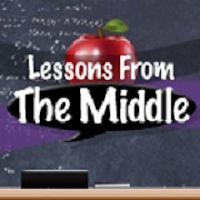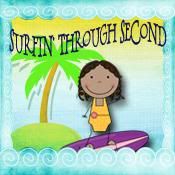How many of you have ever wondered what it would be like to teach in Hawaii?? Well for me it has been a wonderful experience.
I am posting here on
Global Teacher Exchange to share what my school and classroom here in Hawaii are like.
I moved to Hawaii in 2003 after teaching In San Francisco for 7 years. My little family moved out here mainly because my husband is a surfer and used to take a trip here every year and I had just become a mommy. We planned on staying for a year to take some time off from the fast pace of city life, and we never left!!
Today I am going to take you on a tour of my school and classroom. Hawaii schools are under one Unified district, which includes all 8 islands. We are on a Year Round schedule and began this week on July 30.
My school is located on the North Shore of Oahu. It is a rural community that is home to a few small businesses, tourism and surfing.
Our tour begins at the beach park across the street from the school.
This is Ehukai beach, otherwise know as Pipeline. In the summer it is pretty mellow and great for swimming, but in the winter it is one of the biggest and most dangerous waves in the world. Some of the world's most prestigious surfers call this area home and I teach many of their children.
Our school is set at the base of these mountains and really is a beautiful setting to work in. The office staff has told me that tourist buses often stop in our lot to look at our school and teachers who are visiting from the mainland come into the office to ask if they are hiring, lol!!
Most Hawaiian schools are outdoor schools, with walkways that lead to the classrooms. Our school has a main building and portables. I am in one of the portables closer to the back fields behind the school.
We do not have air conditioning/heat. Somedays it's hot and somedays it's cold, but it is never extreme. I do have ceiling fans to cool down the room, but it can still get hot during these August days.
My classroom is a simple affair with two closets for storage, a sink, shelves and desks. My East and West walls are all louvred windows without screens. This helps to keep it cool and get lots of light, but we also have birds, wasps, bees, lizards, centipedes, cane spiders and an array of other critters that fly or crawl into our classroom daily.
The wind also blows through the windows and papers tend to fly all around the room. I have finally found paper weights for all my piles:) The breeze that comes through is off the water and usually cool. That is another perk, I have a partial ocean view from my classroom.
Being so close to the water, our school has to practice Tsunami drills. In the event of a Tsunami threat, we evacuate the school by walking down the street to the next access road. It is a small hike up the mountain to a safe spot. In the last three years we have had two tsunami threats, but we happened to be on Spring Break during both of them. I had to evacuate my home at 2 in the morning when the sirens went off for the earthquake in Japan.
The students at our school are pretty carefree and happy like most kids anywhere. Clothing consist of T-shirts, short and slippers year round. In the winter it rains and does get chilly and the kids still wear the same thing. Coats are non-existant and most students don't even know how to tie their shoes, because they have never owned any with ties!! When I first began teaching here, many kids showed up to school without shoes. The school finally implemented a Must Wear Shoes policy, but they still kick them off every chance they get.
 |
| My daughter and I on the monkey bars:) |
The children here are also pretty active since most of their parents are active. Our school has a very low obesity problem compared to many other Hawaiian schools. We have a great health program funded by a local non-profit which helps make our students aware of healthy choices. It is also a very affluent area now with the cost of real-estate going sky high.
The staff at our school is pretty casual as well. Most teacher's that work here, live out here too. Many of us are surfers and waterfolk. Typical attire for work are shorts, nice shirts and slippers(flip-flops).
When I first started working here I dressed up for the first day in a dress and fancy shoes, by the end of two weeks I looked like everyone else! A co-worker said my look transitioned from San Francisco to San Diego to Hawaii:)
I am also very fortunate to work with some of the best teachers around. We all work hard and put in long hours to make this one of the best schools in Hawaii and our parents know it! We have a waiting list of families trying to get their out of district children into our school.
I could go on and on about where I work. I absolutely think it is one of the most beautiful places in the world and I know I am very fortunate and envied by a few of my peers around the world. Like all teachers my biggest complaint deals with our salary!! The cost of living tends to knock us down to some of the lowest paid teachers around, but the ocean and beauty of it all help make up for it:)
I would love to see where you teach and what your classroom looks like!! Follow the link below to find out more about linking up to this fun Global Exchange of classrooms!!
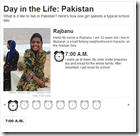
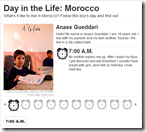
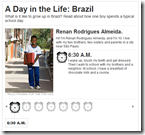




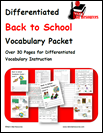 August 23rd. I am super excited to be starting at a new school this year, teaching grades 3 & 4. Stop by Raki’s Rad Resources for details about my new school, and to grab a super-huge FREE back to school differentiated vocabulary packet I have made for my new students.
August 23rd. I am super excited to be starting at a new school this year, teaching grades 3 & 4. Stop by Raki’s Rad Resources for details about my new school, and to grab a super-huge FREE back to school differentiated vocabulary packet I have made for my new students.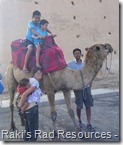 I know my summer is over because I have finished uploading vacation pictures to Facebook and my personal blog – Journey to Morocco. My family had a great 2 weeks in Agadir, a city at the south of Morocco, enjoying the amazing beaches and scenery. Stop by Journey to Morocco to get a glimpse of our trip.
I know my summer is over because I have finished uploading vacation pictures to Facebook and my personal blog – Journey to Morocco. My family had a great 2 weeks in Agadir, a city at the south of Morocco, enjoying the amazing beaches and scenery. Stop by Journey to Morocco to get a glimpse of our trip.

